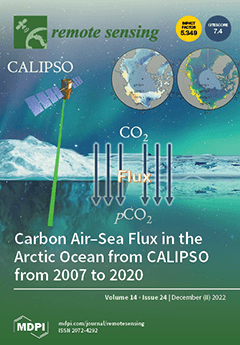On 4 August 2020, a strong explosion occurred near the Beirut seaport, Lebanon and killed more than 200 people and damaged numerous buildings in the vicinity. As Amonium Nitrate (AN) caused the explosion, many studies claimed the release of large amounts of NO
2 in the atmosphere may have resulted in a health hazard in Beirut and the vicinity. In order to reasonably evaluate the significance of NO
2 amounts released in the atmosphere, it is important to investigate the spatio-temporal distribution of NO
2 during and after the blast and compare it to the average day-to-day background emissions from vehicle and ship traffic in Beirut. In the present study, we use Sentinel-5 TROPOMI data to study NO
2 emissions in the atmosphere close to the affected area prior, during, and after the Beirut explosion (28 July–8 August 2020). Analysis shows an increase in NO
2 concentrations over Beirut up to about 1.8 mol/m
2 one day after the explosion that was gradually dissipated in about 4 days. Seven days before the blast (on 28 July 2020) NO
2 concentration was, however, observed to be up to about 4.3 mol/m
2 over Beirut, which is mostly attributed to vehicle emissions in Lebanon, ships passing by the Beirut seaport and possibly the militant activities in Syria during 20–26 July. It is found that the Beirut blast caused a temporarily and spatially limited increase in NO
2. The blast mostly affected the coastal areas in Lebanon, while it did not have much effect on inland regions. TROPOMI data are also analyzed for the Greater Cairo Area (GCA), Suez Canal, Egypt, and in Nicosia, Cyprus to confirm the effect of human activities, vehicles, and ship traffic on NO
2 emissions in relatively high and relatively low populated zones.
Full article





